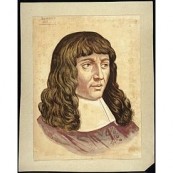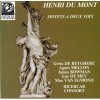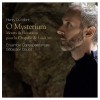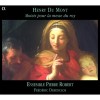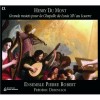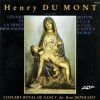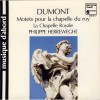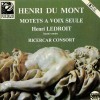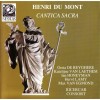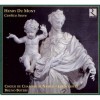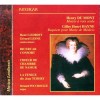Composers
Henri Dumont (also Henry Du Mont, originally Henry de Thier) (1610 – 8 May 1684) was a Franco-Belgian composer.
Dumont was born to Henry de Thier and Elisabeth Orban in Looz (Borgloon). The family moved in 1613 to Maastricht, where Henri and his brother Lambert were choirboys at the church of Notre-Dame (i.e., the Basilica of Our Lady). In 1630 he was named organist and given a leave of two months to complete his education. In the principality of Liège (where he spent much of his time) he studied with Léonard de Hodémont (1575–1639), absorbing trends from Italy. On 1 December 1632, he resigned in favor of his brother. In 1639 he went to Paris to become organist at the important parish church of Saint-Paul. From this time he used the name Dumont or Du Mont in place of De Thier. From 1652 he was harpsichordist at the court of the Duke of Anjou (Philippe I, Duke of Orléans, a brother of Louis XIV), and in 1660 he obtained that post to the young queen Marie-Thérése. In 1663 he became "maitre" of the Chapelle Royale in Versailles, in 1672 he became "Sous-maître de la musique du Roy" (with Pierre Robert) and in 1673 became Master of the Queen's Music.
Dumont was married (1653) to Mechthild Loyens, daughter of the mayor of Maastricht. As a widower he acquired the substantial benefice of the abbey of Silly near Lisieux in Normandy. In 1683 he resigned the last of his posts and died a year later in Paris.
Recently Added
| Country: | Belgium |
| Period: | Middle Ages |
Biography
Henri Dumont (also Henry Du Mont, originally Henry de Thier) (1610 – 8 May 1684) was a Franco-Belgian composer.
Dumont was born to Henry de Thier and Elisabeth Orban in Looz (Borgloon). The family moved in 1613 to Maastricht, where Henri and his brother Lambert were choirboys at the church of Notre-Dame (i.e., the Basilica of Our Lady). In 1630 he was named organist and given a leave of two months to complete his education. In the principality of Liège (where he spent much of his time) he studied with Léonard de Hodémont (1575–1639), absorbing trends from Italy. On 1 December 1632, he resigned in favor of his brother. In 1639 he went to Paris to become organist at the important parish church of Saint-Paul. From this time he used the name Dumont or Du Mont in place of De Thier. From 1652 he was harpsichordist at the court of the Duke of Anjou (Philippe I, Duke of Orléans, a brother of Louis XIV), and in 1660 he obtained that post to the young queen Marie-Thérése. In 1663 he became "maitre" of the Chapelle Royale in Versailles, in 1672 he became "Sous-maître de la musique du Roy" (with Pierre Robert) and in 1673 became Master of the Queen's Music.
Dumont was married (1653) to Mechthild Loyens, daughter of the mayor of Maastricht. As a widower he acquired the substantial benefice of the abbey of Silly near Lisieux in Normandy. In 1683 he resigned the last of his posts and died a year later in Paris.
